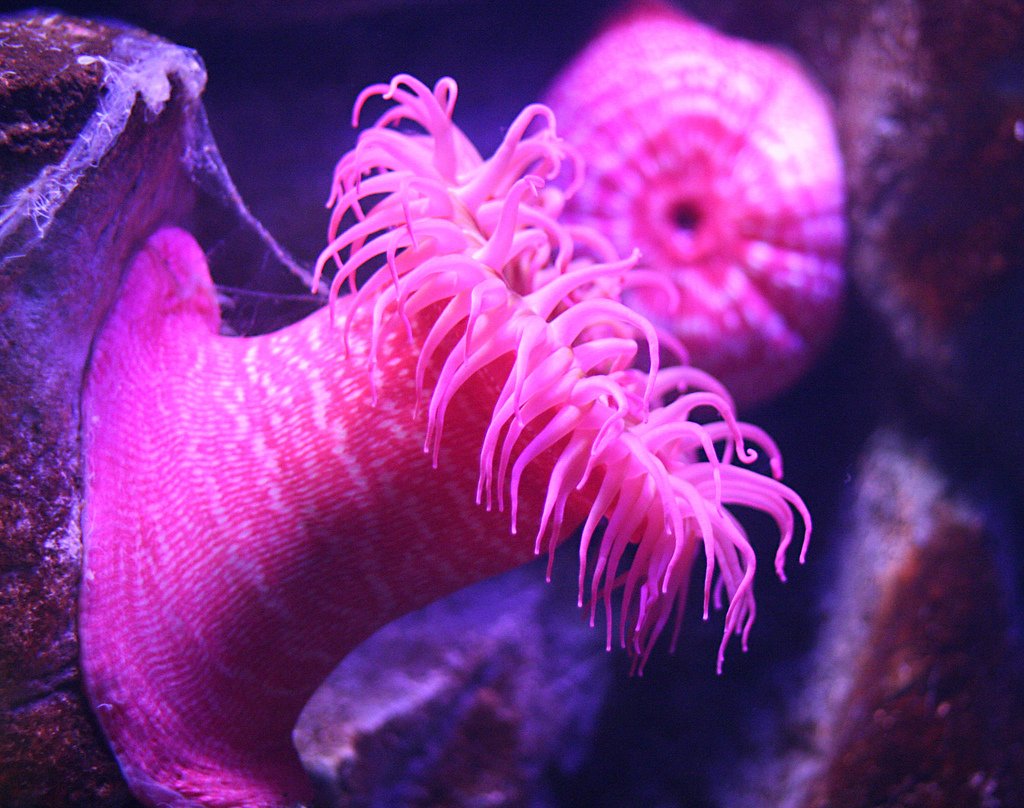For centuries, healers, shamans and traditional doctors have harnessed nature’s creations to make life-changing medicines. And we’re not just talking about alternative medicine. Take, for example, the antibiotic penicillin discovered in mold or the chemotherapeutic agent paclitaxel derived from the bark of the Pacific Yew tree. Now the Israeli company StarletDerma is carrying on the tradition of medicine inspired by nature with their innovative skincare treatment called Inocyte, sourced from the ancient sea anemone.
The starlet sea anemone, a living, breathing “sea plant” from the jellyfish family, has a unique defense mechanism that surprisingly has more conventional applications than taming prey. Based on the research conducted by husband and wife Dr. Tamar and Dr. Amit Lotan of the Hebrew University, the founders of StartletDerma, discovered that the same micro injectors used by the sea anemone to inject venom into their prey could be collected to more effectively infuse popular cosmetic products, like anti-wrinkle and brightening creams, deeper into the skin.
Related articles
- Are Your Shaving Razors Inspired By Frog And Cricket Legs??
- Fear Needles? New Hebrew University Invention May Make That A Thing Of The Past
After discovering a method to safely harvest the sea anemone, the people at StartletDerma developed a product that comes in two parts: one part is a water-based cosmetic formula that is sprayed on the skin; the other part is the Inocyte formulation itself, composed of a collagen-based capsule filled with the active cosmetic ingredient. The water-based product sets off the firing mechanism within the micro-injectors, once the sea anemone-derived Inocyte compound is applied. At once, the micro-injectors painlessly penetrate the skin, as if they were attacking sea anemone prey, creating micro-channels for the effective absorption of the given cosmetic ingredient deep into epidermal layer of the skin.
The anomaly of the sea anemone
The idea for a sea anemone-based skin solution was not conjured up overnight. The research conducted by the two doctors over a decade ago originally focused on the stinging mechanism of jellyfish, with the pair hoping to develop a sunscreen to protect against jellyfish stings, a common and painful occurrence for swimmers in late summer months. However, the Lotans immediately redirected the finding to focus on the starlet sea anemone micro-injector defense mechanism, what they believe is the key to making the most of cosmetic products by channeling them deeper into the skin.
[youtuber youtube=’http://www.youtube.com/watch?v=lktgSRYYtuA’]
Together with the couple, the StartletDerma team then began to harvest batches of sea anemones to create the Inocyte compound. “It is not trivial to cultivate a marine animal,” explained StarletDerma CEO Amir Toren, “and in the cosmetic industry the use of animals is taboo. There are companies that are not willing to work with us because we are dealing with animals.” However, the company claims that anemones are very ancient animals (in evolutionary terms), devoid of the capacity to think or feel. “We have letters from two prominent regulatory authorities helping us clarify the special status of sea anemones,” Toren explains, “and we also grow all the anemones in-house and don’t interfere with natural reserves.”
Controlling the lifecycle
Sign up for our free weekly newsletter
SubscribeThe starlet sea anemones used to produce Inocyte are grown in a re-circulatory aquatic system (RAS) in Caesarea, Israel, allowing scientists to control the species’ entire lifecycle. “We know how to induce egg laying, spawning and fertilization. We also have a number of patents on shortening the growth cycle so 95 percent of our anemones mature in three months compared to the one and a half years it takes them to mature in nature,” says Toren. The StartletDerma team, made up of founder Doctor Shimon Eckhouse, CEO Torin and Chairman Alon Maor, seek to shorten the anemone’s lifecycle in order to market their product to as many major cosmetic companies as possible as a seamless solution for delivering cosmetic ingredients deeper down into the skin.
The trouble of taking starlets to market
Despite the challenges of marketing a product created from a marine animal, StartletDerma is moving ahead. The technology has already undergone a number of clinical trials and is currently being tested to see how it interacts with some of the cosmetic industry’s major products.
“We measure the ability of Inocyte to enhance penetration of a compound using the Franz-type flow cell technique,” explains Toren. In this technique, two compartments are divided by a membrane or skin (artificial or animal) and the amount of compound absorbed within the membrane with and without the Inocyte is measured. “This way we know that each batch is uniform and we are able test the efficacy of our system with our collaborators’ compounds,” says Toren.
Speaking of collaborators, news was recently published regarding StartletDerma’s new partnership with world cosmetic giant L’Oreal to produce the next big anti-wrinkle cosmetic delivery method. According to Chairman of the Board Alon Maor, the company has formed a number of partnerships with well-known cosmetic companies over the past year, hoping to bring the Inocyte treatment to a commercial level. To date, StarletDerma has raised nearly $9 million, with hopes to spike its profits with its newly acquired partnerships.
Ben Miron is a medical student and researcher at NYU School of Medicine. He is fascinated by the amazing emerging technologies and discoveries being made in the life sciences as they pertain to healthcare. Read about some of these mind-blowing and bordering on sci-fi advances happening in Israel on his blog milkandscience.com and follow him on twitter @milkandscience.
Photo: ginnerobot
Related posts

Israeli Medical Technologies That Could Change The World

Harnessing Our Own Bodies For Side Effect-Free Weight Loss

Missing Protein Could Unlock Treatment For Aggressive Lung Cancer




Facebook comments